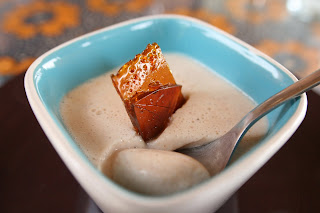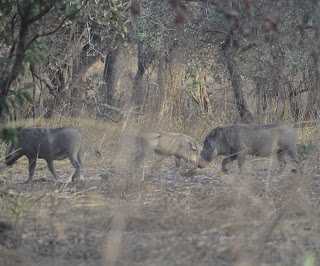I paused and thought of this scene from the previous week when I was just a plain old tourist careening down narrow roads with my husband in our rented Hyundai:
Corsica is the most mountainous island in the Mediterranean, situated west of Italy and southeast of France. The sapphire blue water of the eleven kilometer Strait of Bonifacio separates it from Sardinia - its Italian cousin to the south. With abundant fresh water, fertile soil, and numerous vantage points across the ocean, the island has been a location worth defending since Mesolithic times. I would argue that its stunning coastal scenery...
Scenery and food. Those were definitely at the top of our list of reasons to visit Corsica. My husband was mostly interested in discovering the best coastlines for swimming and exploring tide pools...
Almost lost to industrial wine-making, which did not favor local grapes, these native varieties are making a huge come-back thanks to people like Marc Imbert of Domaine de Torraccia and Elisabeth Quilichini of Castellu di Barrici. These heritage winemakers strive to produce quality wines that reflect the flavors of the strong Mediterranean sun and granite soil of Corsica.
But viticulture and oenology are not the only things going for Corsica, gastronomically speaking. The once self-sufficient island also produces flavorful fruits, vegetables, and nuts - like figs, citron, Swiss chard, and chestnuts - that are transformed into rustic dishes that please the palate and soothe the soul. Pungent but deliciously meaty charcuterie is made from the acorn-fed pigs that roam the island, and shepherds still tend flocks of sheep and goats whose rich milk is turned into flavorful cheeses.
With its abundance of stunning scenery, good food, and twenty different WWOOF farms - ranging from vineyards to cheese-making sheep operations - to choose from, Corsica was the ideal place for me to give WWOOFing a try for the first time.
Anni and Philippe, the owners of L'Ortunlinu - the only certified organic farm in Bonifacio, Corsica - welcomed me into their modest home where I quickly adapted to a routine of:
...weeding rows of plants and clearing fields early in the morning...
...dining on simple lunches showcasing the rich flavors of freshly harvested vegetables from their farm...

...enjoying siestas on the beach in the heat of the afternoon...
Thanks to jovial conversations with Anni, Philippe, and other farmers in the area, I learned a lot about Corsican agriculture and experienced first-hand the pleasures of a different rhythm of life spent outside working with the plants we set on our tables every day without even a thought.
Although a recent Stanford University study shows that there is no nutritional difference between organically and conventionally grown produce, Anni and Philippe have confirmed for me that there is a taste difference (and I suspect an overall health difference). I believe this comes from the absence of pesticides and fertilizers, healthy soil, and the fact that the produce is harvested right before going to market.
After leaving their farm, where I feasted on fresh, sticky-sweet figs for a week...
...the conventional figs I bought while in transit back to Niger just weren't the same.


































